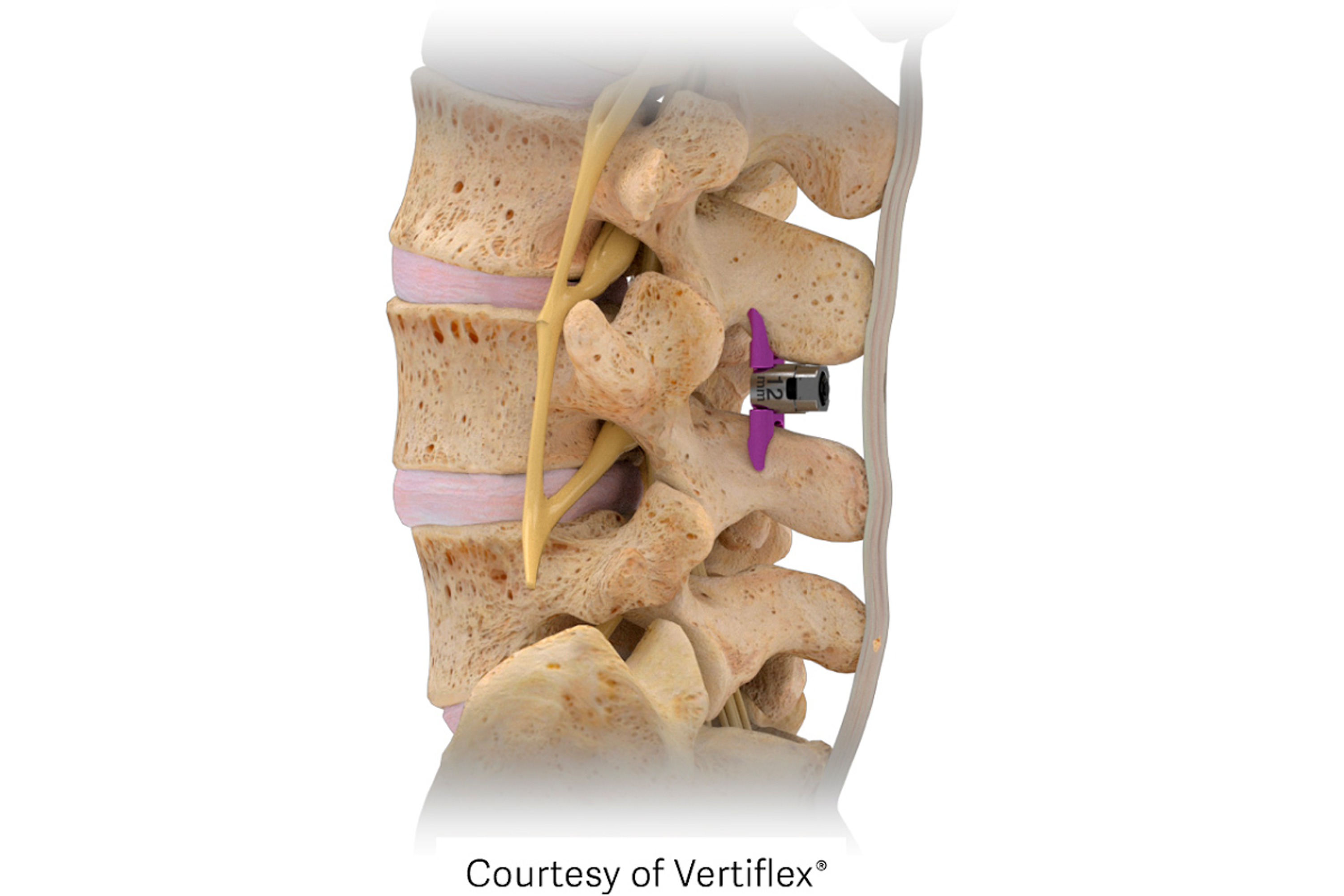Vertiflex Procedure

The Vertiflex® procedure was developed with patient safety and comfort in mind to give lumbar spinal stenosis sufferers the freedom to get on with their daily lives. In a clinical study, 90 percent of patients reported satisfaction even after five years with the Vertiflex® procedure.
The Vertiflex® procedure uses a small implant that creates space for nerves in the spinal canal. The implant is folded so it can be placed through a small tube. The implant arms open around the spinous process, locking it into place. It supports your existing anatomy and is completely reversible, leaving all treatment options available in the future.
What is Spinal Stenosis?
Lumbar spinal stenosis (LSS) is a degenerative lumbar spine condition. The soft tissue or “discs” between the vertebrae (bones that make up the spine) become worn down as we age. This causes the spinal canal to narrow, which can apply pressure to the nerves in the lower back. This pressure can lead to radiating leg, buttock, and/or groin pain. People with LSS typically cannot walk farther than 50 feet without feeling this pain and find relief when sitting down or leaning forward. This pain can worsen over time if left untreated.
A solution to LSS is Vertiflex’s Superion® Indirect Decompression System. This device acts as an extension blocker, allowing the spinal canal to stay extended when standing and relieving pressure on those affected nerves.
Superion is an alternative to traditional surgery, offering a minimally invasive procedure that is simple, safe, and effective. Superion’s effectiveness is validated by years of clinical research and is FDA-approved.
